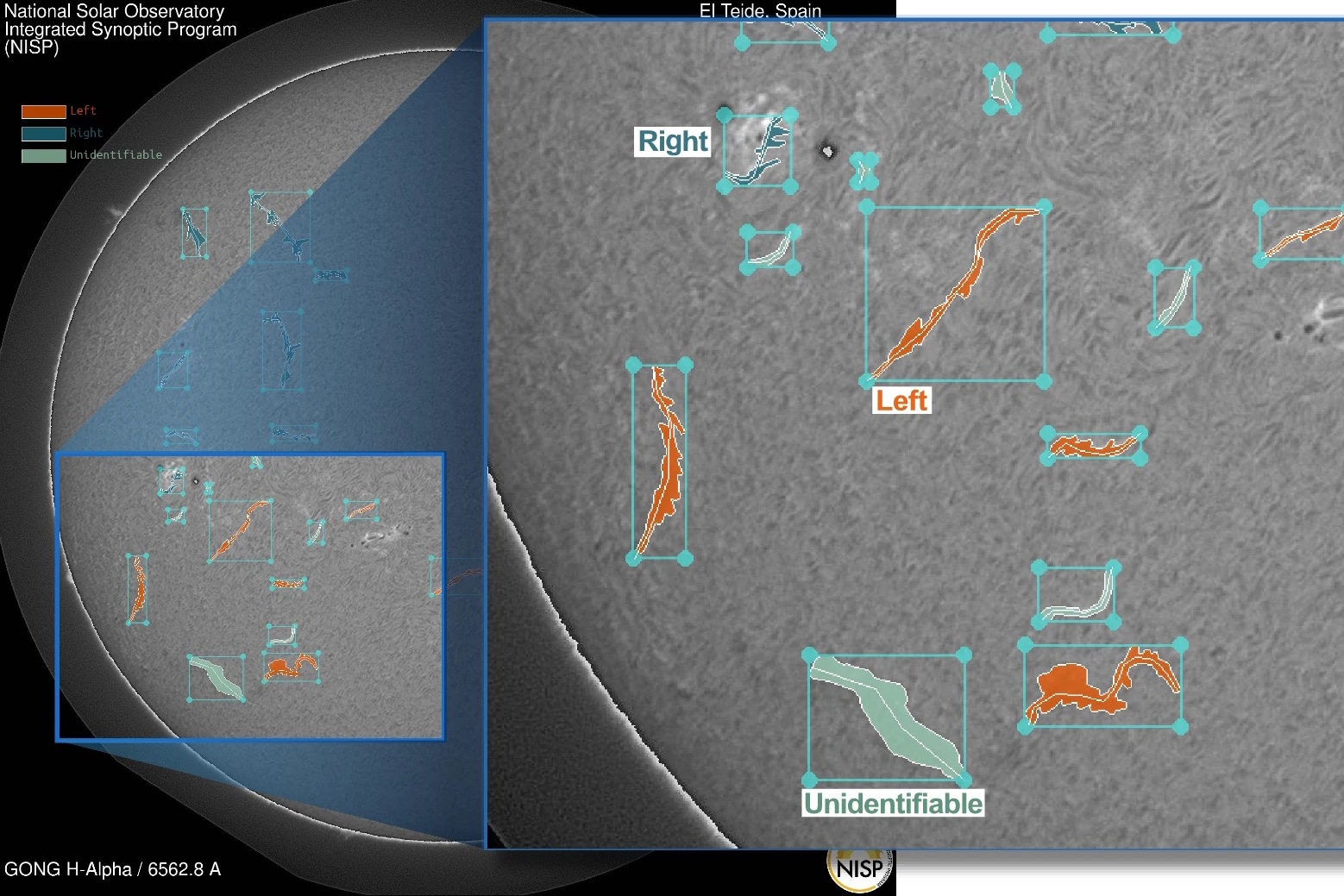Harnessing AI for Space Weather Forecasting with NSF GONG Data

By the National Solar Observatory
Where the insights of solar physicists meet the innovative tools of AI engineers
Solar filaments, dramatic thread-like structures visible in the Sun’s chromosphere, may hold the key to understanding one of the most powerful phenomena in space weather: Coronal Mass Ejections (CMEs).
These explosive releases of plasma and magnetic fields from the Sun can hurl billions of tons of material into space, and when they collide with Earth’s magnetosphere, the result can be geomagnetic storms capable of wreaking havoc on satellites, power grids, and communications. The orientation of the magnetic fields in these CMEs, which are closely tied to the filaments that spawn them, is a critical factor in determining the severity of their impact on Earth.
Despite their importance, the timely detection of solar filaments and their magnetic properties, such as chirality (or handedness; see figure below), has remained a challenge. Early and accurate identification of filaments could drastically improve space weather forecasts, allowing us to better predict the strength and timing of geomagnetic storms.
This is where Artificial Intelligence and Machine Learning (AI/ML) approaches can step in to help revolutionize the process. But to make these technologies work effectively, extensive and high-quality training datasets are essential – a need that has only recently been addressed.
A Breakthrough Dataset: MAGFiLO v1.0
Enter the Manually Annotated GONG Filaments in H-alpha Observations (MAGFiLO v1.0) dataset. The effort, led by Azim Ahmadzadeh at the University of Missouri-St. Louis, includes NSO scientists Alexei Pevtsov, Luca Bertello, and NSO engineer Alexander Pevtsov. This pioneering dataset includes detailed annotations for 10,244 solar filaments from 1,593 solar observations, captured by the U.S. National Science Foundation (NSF) Global Oscillation Network Group (GONG) between 2011 and 2022. GONG, which is operated by the NSF National Solar Observatory (NSO) with support from the National Oceanic and Atmospheric Administration (NOAA), offers a wide observational coverage through its network of facilities around the world, and a long operational history, making it an ideal source for this large-scale dataset, which spans an entire solar cycle, offering insights into different phases of solar activity.
What makes MAGFiLO truly groundbreaking is the depth and precision of its annotations. The creation of this dataset required over 1,000 person-hours of expert manual annotation, followed by a double-blind review process to ensure the highest standards of accuracy. Each filament is tagged with crucial information including its magnetic field chirality.
